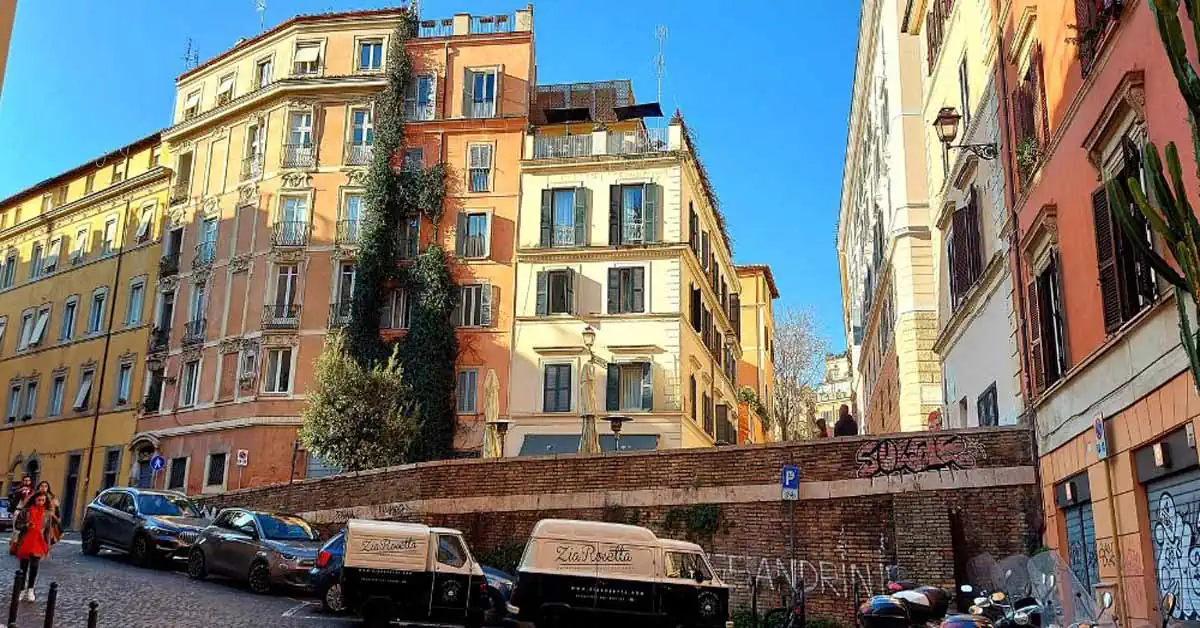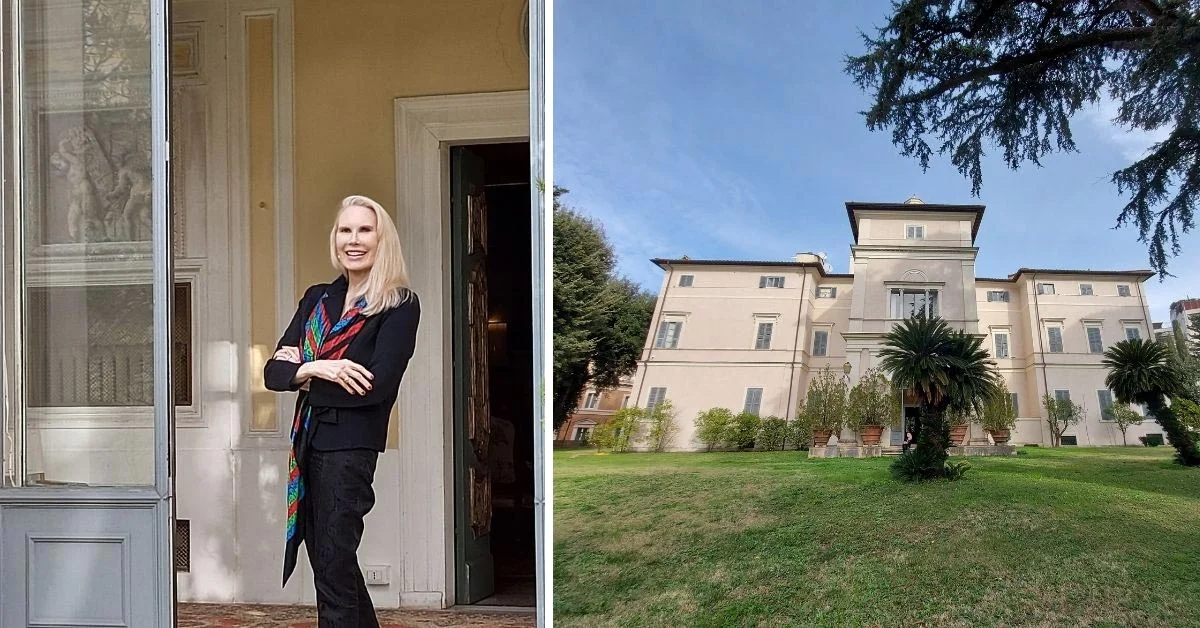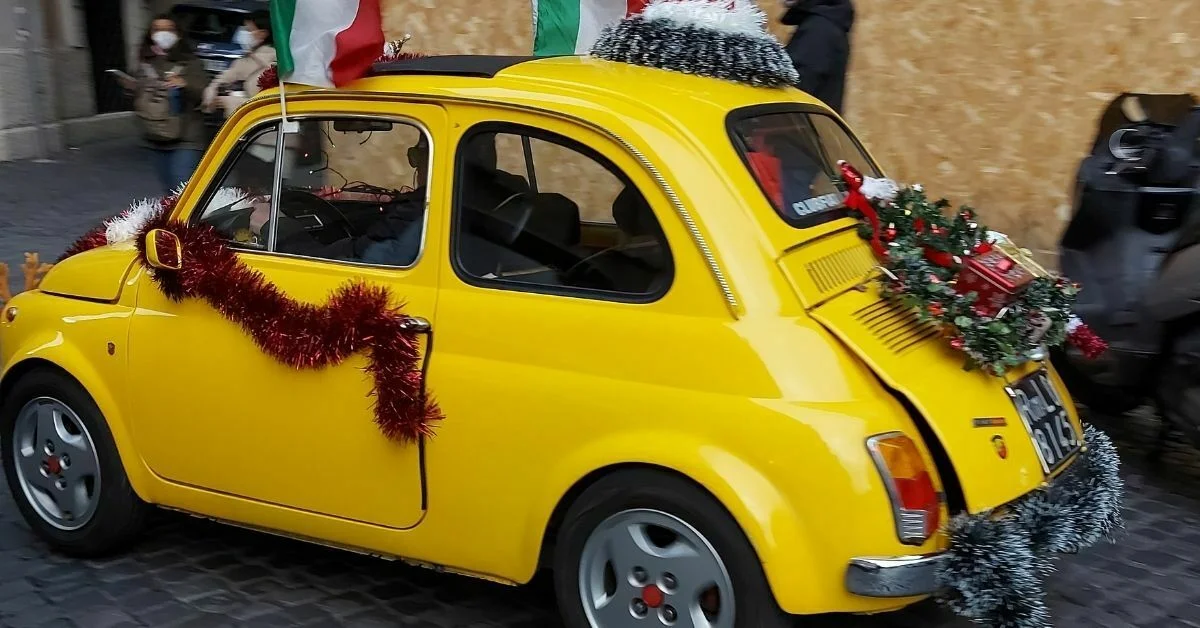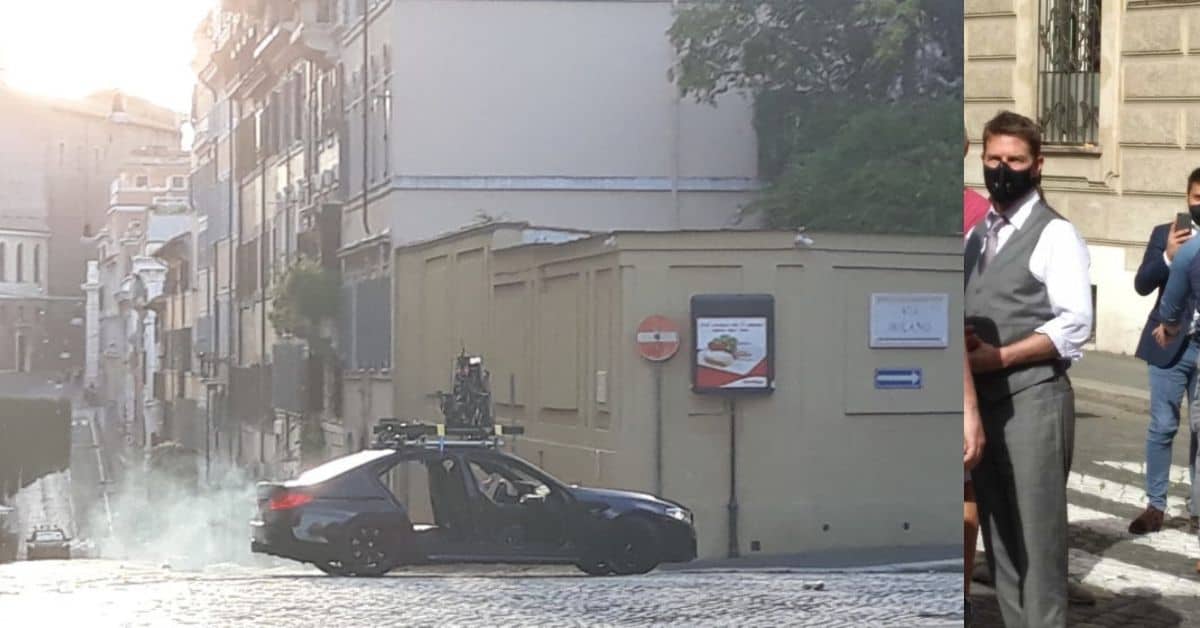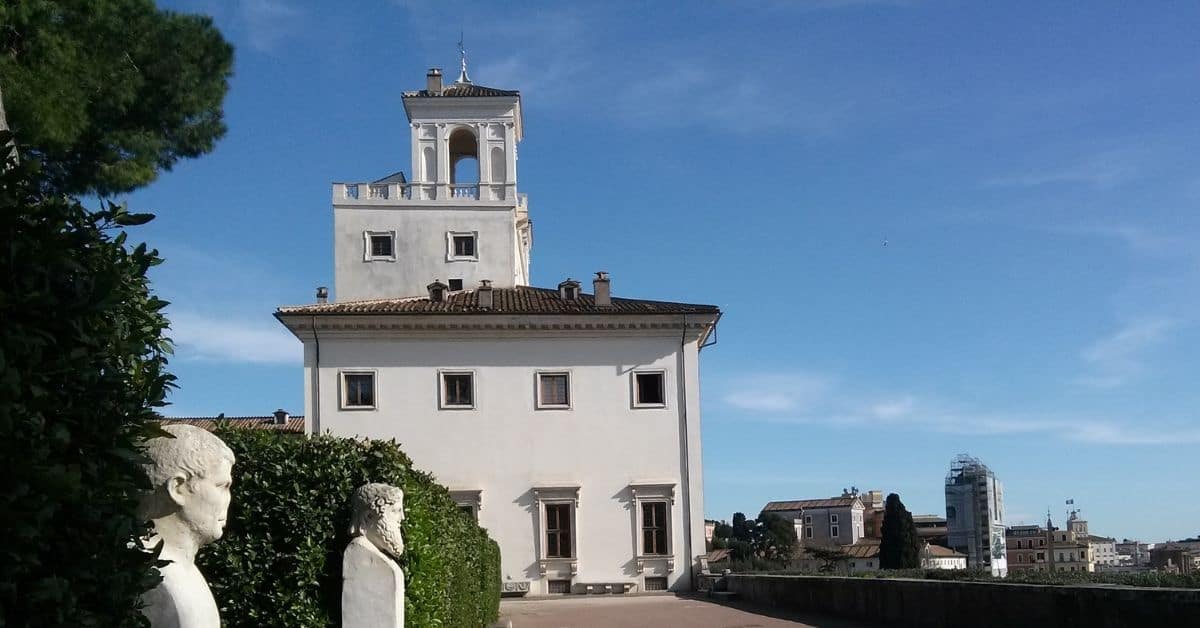Discover Rome off the beaten path on the tram. It’s an easy, cheap and non-touristy way to visit Rome.
A Streetcar Named Great Opportunity
You hardly ever see them and you hardly ever hear them, but trams (streetcars) are part of Rome. They take you past famous monuments and unknown museums. They are a great opportunity to see Rome off the beaten path.
We chose one of Rome’s six tram lines. Tram number 3 is the most interesting line. It is the only one that runs near the city centre.
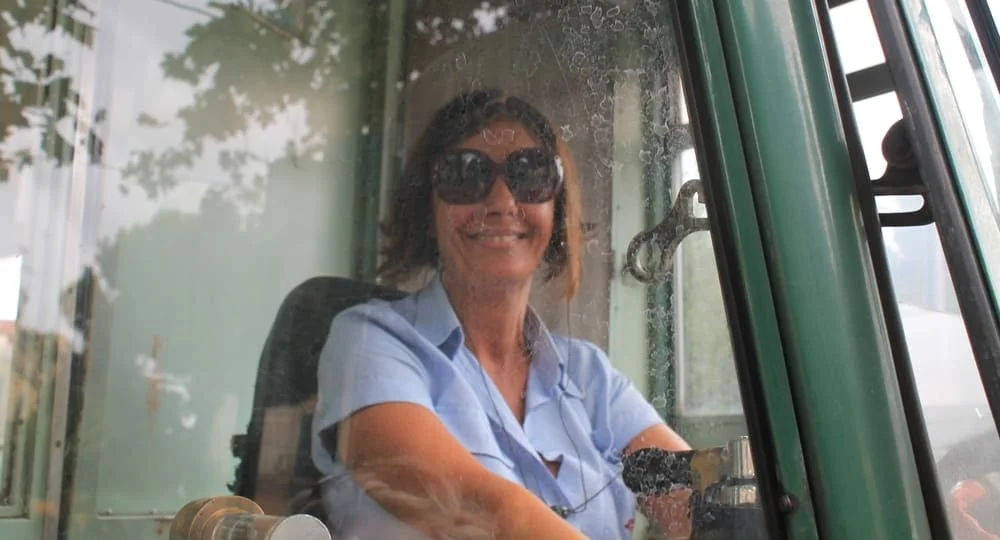
This tram line starts at the Pyramid in the south and ends at Villa Borghese, the city park in the north. Read about our experiences of Rome off the beaten track. We hope it will give you an idea for your (next) visit to Rome.
This content is not shown.
Click on this block to display all our content, by accepting our cookies or review our cooky-policy below.
Tram ticket
There is no such thing as an exclusive tram ticket. You can just take a 100-minute ticket that is valid for all public transport in Rome. It is very cheap: 1.50 euro. You also can choose to take a day ticket (7 euros) and make your own Hop-on Hop-off tour. Let’s start:
San Paolo Gate (Porta San Paolo)
It is a run for your life to get to the Roman city gate of San Paolo, which stands in the middle of one of the busiest roundabouts in Rome. The old gate houses a small museum. Three attendants, one with her nose in a crossword puzzle book, another busy with her iPad and the third behind a computer, keep watch in the twilight.
That is no mean feat. “We get about 30 to 40 visitors a day,” says the jigsaw woman. Anyway, the museum is nice because of the models of the ancient ports of Rome (Ostia and Porto). And you have a nice view of the Pyramid.
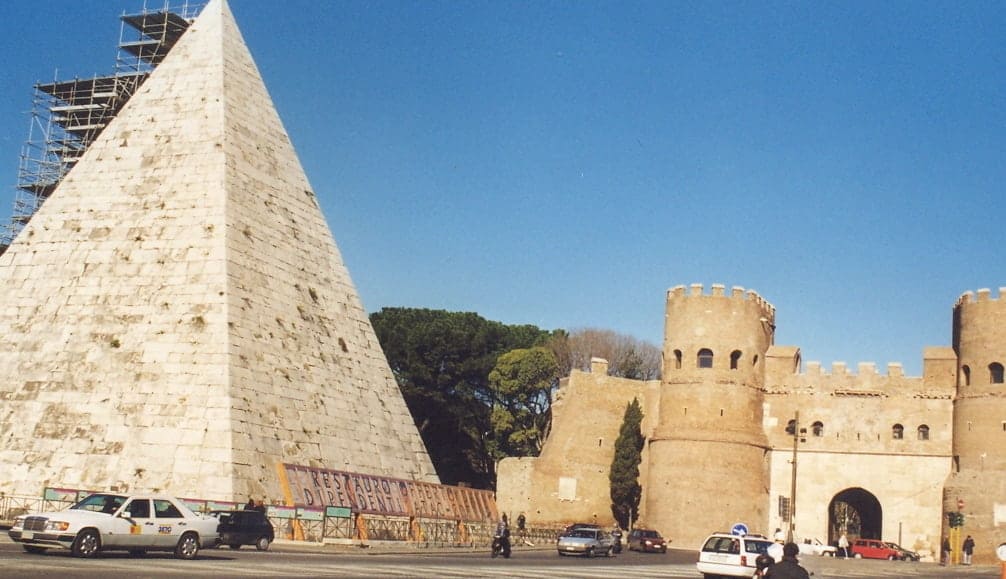
What is a pyramid doing in Rome? Stolen from Egypt, like the many obelisks in the city? Nope. It was erected on the spot as a funerary monument for a high magistrate in the first century AD according to the Egyptian fashion of the time.
The structure was restored a few years ago. The costs of the ‘Egyptian’ monument were borne by a Japanese entrepreneur. Well, if this isn’t ‘Caput mundi’ (Rome, capital of the world) par excellence.
Circus Maximus
At the square of the city gate and the pyramid you will find the departure point of the tram as well. Rome has six lines. We take tram number 3, Rome’s ‘north-south line’, which passes by a few well-known monuments and shows us Rome off the beaten track.
At the starting point, we meet Giovanna, a 70-year-old who tells us she has watered the plants and emptied the mailbox of her flat in the luxurious San Saba district. “I do this every three days, and at a different time each time, to avoid potential thieves”, she says.
This content is not shown.
Click on this block to display all our content, by accepting our cookies or review our cooky-policy below.
She does not live there, however, but in another of her flats in yet another upmarket neighbourhood. Giovanna is an exponent of the generation that has invested its money in housing. If all those second and third flats were to come on the market, the housing shortage would be solved.
The tram passes the short side of the Circus Maximus. We get off to see part of the tribune of this ancient horse-racing track. You can see the supports of the grandstands, part of the pavement and, if you look closely, even the remains of the sewers. At a kiosk nearby, we bite into a piece of red melon in the shape of a cake. For one sestertius, or is it a euro?
Coliseum (Colosseum)
The tram now heads towards the Coliseum, from the ‘rear side’ so that you can see the mighty structure from inside the tram. Most of the 6 million people that visit the Coliseum every year will not notice that a tram is passing by the building.
At the stop nearby, an extremely fragile lady enters, dressed to the nines in a turquoise waistcoat and lots of bling-bling. “I took a tour of the Coliseum. So interesting!” It’s proof that Romans are proud of their city. ‘Real’ Parisians, it is said, never visit the Eiffel Tower.
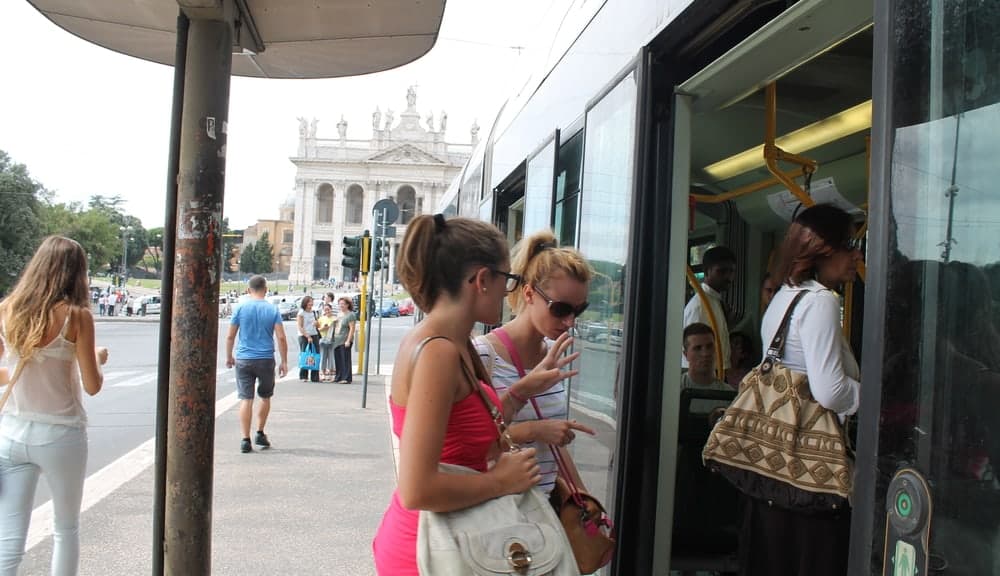
Santa Croce in Gerusalemme
The tram takes a sharp turn to the east to get to the Church of St John of the Lateran. We get off to walk to the next stop. An attractive green area and a part of the old city wall from the third century AD can be visited. Most visitors are in the ‘local’ category: joggers, mums and dads with pushchairs and dogs on a leash.
At the end of the park is the church of Santa Croce in Gerusalemme, so called because of the cross of Christ that is said to have come from Jerusalem. Apart from that relic, the church has other fascinating signs of holiness, such as the finger of the ‘infidel’ Thomas and the inscription INRI.
This content is not shown.
Click on this block to display all our content, by accepting our cookies or review our cooky-policy below.
A bunch of unknown museums
Not only enthusiasts for relics come to visit this area. Right next to the church you can find the museums for music lovers (Musical Instrument Museum) and war (Museum of the Infantry and the Museum of the Sardinian Grenadiers).
Also read: these museums are free of charge. Read about other monuments, events and things to do for free in Rome.
The premises of the Instrument Museum are also home to the Directorate of Film, a ministerial agency that promotes and co-finances Italian film. Apart from a papier-mâché horse head, a stage set standing under a colonnade, nothing reminds us of film.
Around lunchtime, the officials sit in the modernly furnished bar with plenty of seating, which -typically Italian- is also a small restaurant (‘tavola calda’).
“The bar is open to everyone”, says a female official who, with extremely well-groomed facial lines and sexy blouse, looks like a film star, but is presumably arranging files. We sit down and have a fried sea bass under a layer of stacked potato slices, melted cheese and tomatoes (5 euros).

Porta Maggiore
The tram later takes us to Porta Maggiore square, the heart of tram-moving Rome. Here, trams serving four lines buzz back and forth. Most trams jingle as they approach. The equipment is a mix of old and new, just like Rome itself.
There are still beautiful examples with round noses from (if I’m not wrong) 1948, typical trams with large angular windows from the 1980s and space shuttle-like models from the last twenty years.
The square of Porta Maggiore is a busy traffic junction, but stands out in particular for its city gate and the remains of ancient aqueducts. The double aqueduct above the city gate can still be seen. The acqueducts rhyme nicely with the metal overhead wires of the tram and the street-car tracks in the road.
This content is not shown.
Click on this block to display all our content, by accepting our cookies or review our cooky-policy below.
The tram now dives under a viaduct. Above it is the emplacement of Termin, Rome Central Station. A little further on, we pass under the fly-over of an inner-city ring road (‘Tangenziale Est’).
The apartment buildings are right next to this road. “How would it be to live there”, you think quietly. Or you picture the scene from the comedy film ‘Fantozzi’. The main protagonist lives in a flat at the same height as the flyover and steps over the balcony in the morning to catch the city bus.
Also read: about this famous Fantozzi location and other films in which elevated urban highways play the leading role
Planning may not have excelled here, nowadays the neighbouring districts of San Lorenzo and Pigneto are quite ‘in’, partly due to the large number of bars and restaurants on offer. These districts are mostly inhabited by foreigners and students. Rome’s largest university, the Sapienza, is nearby.
Verano cemetery
Meanwhile, the tram passes through a number of streets with quite a few shops where marble workers advertise their wares and shops specialising in tombs and urns, and other things related to the eternal hunting grounds. We approach the municipal cemetery of Verano. Don’t imagine austere tombstones, dreary lawns and sad trees without leaves.
Verano is a monumental town of dead, beautiful buildings and full of pine and cypress trees. It is a completely walled open-air museum the size of twice the Vatican. The area is so large that there is special public transport. During the week, you will rarely meet a person.
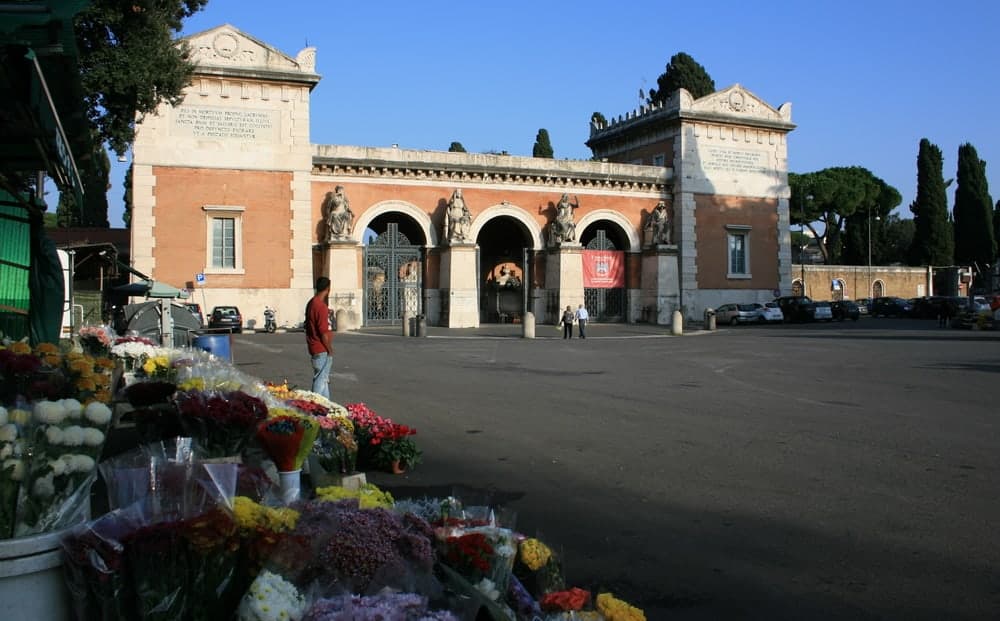
Within walking distance of the entrance to this cemetery is the monument to the Zouaves, papal warriors who died at the battle of Mentana in 1867. Thousands of (not only) Dutch Catholic boys had also come to the aid of the pope, but died far from home, as can be understood from the Latin names on the monument.
A bit further on, we finally meet two living creatures. They are studying the grave of a certain Ettore Petrolini. “An important man for the Italian theatre”, say Teresa and Ezio, who are tourists in their own city.
This content is not shown.
Click on this block to display all our content, by accepting our cookies or review our cooky-policy below.
Mastroianni’s grave
Preferably a real celebrity. We are looking for perhaps the most famous Italian of the last 60 years: Marcello Mastroianni. That is not easy. A man who is smoking outside the mortuary with some colleagues shows the way: “Go down this street, up the stairs on the right, then go down the avenue at right angles to…” he begins.
The man is racking his brains. “…And then ask again.” Paolo, as the man is called, is the boss of the morgue. But as Verano is almost full, and only cleared graves can welcome new guests, Paolo will never be very busy.

Mastroianni’s grave is in a far corner near the separation wall. You can hear the busy traffic behind it. Not very Dolce Vita. Not like Jim Morrison’s grave in Paris, where fans bivouac around the grave. At Marcello’s are some plastic flowers.
Someone has placed two short cigars on the simple porphyry slab. Outside Verano, flower seller Anna complains. “First the relatives come every day for their loved one, then every month, and then you don’t see them anymore.”
National Etruscan Museum (Villa Giulia)
We continue our tram journey to end up on the northern side of Villa Borghese. The scents of the zoo enter the tram. But we leave the zoological garden aside. At the final stop, a little further on, you will find the Etruscan Museum.
The collection, which includes a beautiful tomb on which an Etruscan man and woman are lovingly lying united together, is somewhat old-fashioned and displayed in showcases.
The museum is in Villa Guilia, one of the subtlest city palaces in Rome. With the double garden and a nympheum, it is a jewel. However, the building is hardly visited. “About 150 visitors today”, checks a woman at the ticket office. With a platoon of attendants – we meet dozens – we feel like a special breed.
This content is not shown.
Click on this block to display all our content, by accepting our cookies or review our cooky-policy below.
40 kilometres of tramways
Rome’s six tramlines in brief, six Rome off the beaten path opportunities:
Tram 2
From: Piazza Mancini (Olympic stadium)
To: Piazzale Flaminio (Piazza del Popolo)
To visit: MAXXI, music theatre Auditorium, Ponte Milvio
Distance: 2,7 km
Tram 3
From: Piazzale Ostiense (Pyramid)*
To: Piazza Thorvaldsen (Villa Borghese)
(* will be extended to Trastevere station)
Distance: 13,3 km
Tram 5
From: Central Station (Termini)
To: Piazza dei Gerani (Eastern suburb ‘Centocelle’)
To see: Santa Maria Maggiore, Porta Maggiore
Distance: 7,2 km
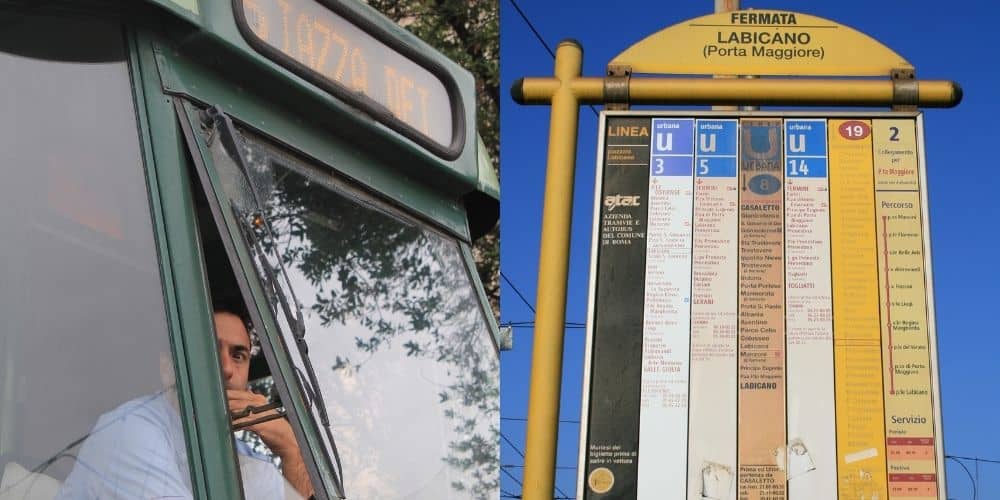
Tram 8
From: Piazza Venezia
To: Via del Casaletto
To see: Campo de’ Fiori, Trastevere, Villa Doria Pamphili
Distance: 5,8 km
Tram 14 (7,5 km) follows almost the same course as tram 5
Tram 19
From: Piazza Risorgimento (Vatican)
To: Piazza dei Gerani (Centocelle)
To see: Villa Giulia, Zoo, Villa Borghese, Verano
Distance: 14,3 km
This content is not shown.
Click on this block to display all our content, by accepting our cookies or review our cooky-policy below.

